#artsygames
Explore tagged Tumblr posts
Text
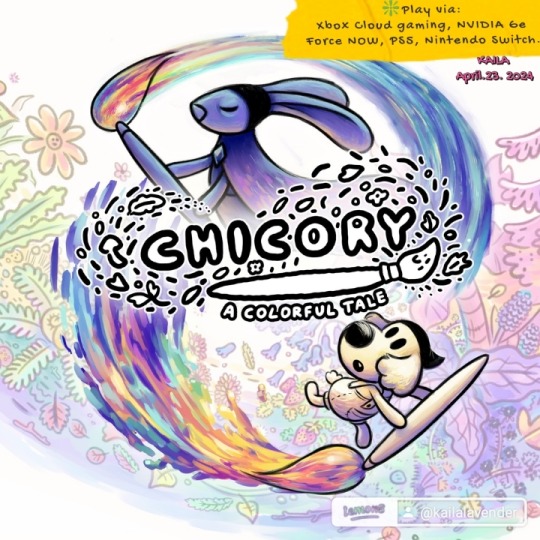
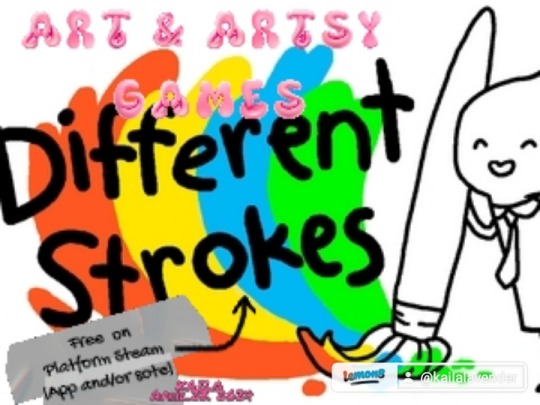



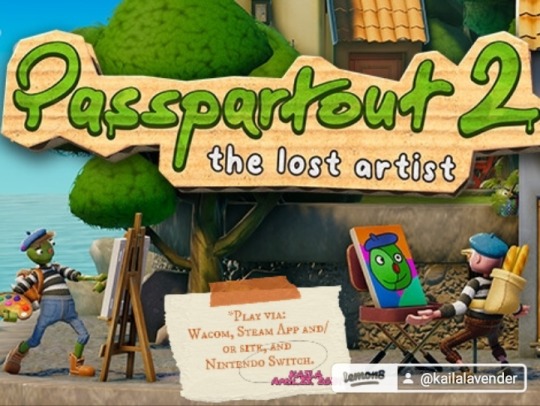

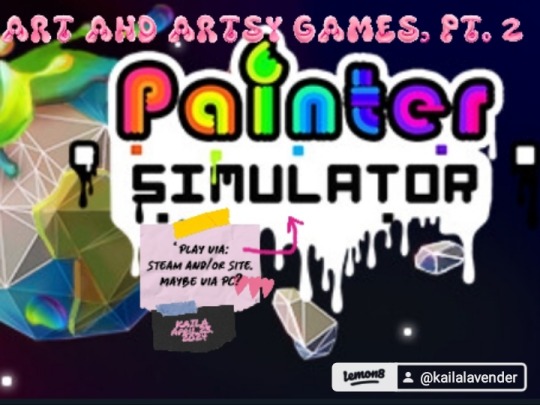

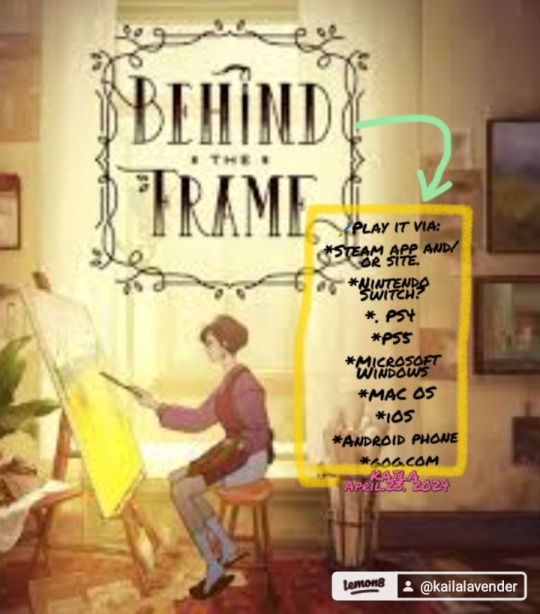
ART & ARTSY GAMES I want to play , PT. 1🎨🎮📱💻🖥️🖱️👩🏽💻
2 notes
·
View notes
Text
Two mews under a mistletoe 😊♥️

7 notes
·
View notes
Text
artistic-gamer ====> steampowered-artsygamer
3 notes
·
View notes
Text
The Legend of Zelda: Breath of the Wild - Review
This review was originally published on Artsygamer on April 9th 2017
With The Legend of Zelda: Breath of the Wild, Nintendo has done something absolutely incredible and amazing. And after more than 70 hours and beating the main story of the game, I am still not quite sure how they did it.
I was never a fan of the 3D Zelda games. Even Ocarina of Time was not able to keep me interested throughout the whole game back in 1998; something that is still true to this day. I also don’t like open world games that much. So what were the chances of me even liking Breath of the Wild? Yet here I am trying to convey the brilliance of a masterpiece to you without even realizing the full spectrum of it myself.
For the longest time, Nintendo has been infamous for ignoring most of the industry’s achievements and instead focusing on itself. This has been true since it entered the US market in 1985: 2 years after the breakdown of the game industry, nobody wanted to get into videogames; except for Nintendo, which was able to resuscitate a dead industry with games like Super Mario and The Legend of Zelda. Decades later, their ignorance of the HDTVs and after the failures of the Nintendo 64 and the GameCube, which not only lost the market leadership to the less powerful PlayStation and PlayStation 2 from SONY but also struggled against the industry newcomer from Redmond, led Nintendo to the Wii. This time, it was the company itself that rose out of the ashes like a phoenix. But it wasn’t so much the games defining the success but rather the movement control technology. Nintendo, assured that their ignorance of the rest of the industry would led them to new innovations and even bigger success then went on to present the WiiU. A critical failure that started a transformation of this industry heavyweight leading to many improvements in the way Nintendo developed and develops their businesses and Breath of the Wild is one of the products reflecting this transformation.
Breath of the Wild is influenced by many games with more or less open worlds. Aonuma himself explained in interviews that many of the younger designers at Nintendo play a lot of games from other companies and the influences for Breath of the Wild include Minecraft, later Far Cry games, Assassins Creed, Skyrim and the Souls‘ games. But rather than just taking bits and pieces out of those games and throwing them together, Nintendo assessed and transformed them; and by doing that it created something that isn’t afraid to let the player roam free, explore everything that it has to offer and experimenting with crazy ideas that – and this is to the game design’s credit as well – most of the time work out as the player expects.
The first striking thing about Breath of the Wild is its pace in the beginning hours. You wake up, you get your Shieka slate and then you’re sent to the entry of the crypt in which you were sleeping for over 100 years. To leave the crypt, you have to climb and it’s there where the game for the first time introduces a mechanic that we have all seen in other games before but never so well implemented and put to such good use as in Breath of the Wild's kingdom of Hyrule. The whole introduction to the player’s toolset takes about 2 hours in which you acquire the Shieka slate‘s different powers, learn how to protect you from environmental hazards and how to use the game’s manifold system’s to ambush enemies and create paths to places formerly unreachable. Although the game is never shy to show you how useful certain objects or skills are, it also rarely forces its systems onto the player with the exception of the weather system – but more about that later. This leads to playthroughs in which players travel all the way to the final boss only equipped with sticks and apples. Having beaten the game’s final boss I can’t imagine this to be much fun but I also didn’t complete even 30% of the whole game so maybe the time will come when I have completely mastered this game and am in such a dire need for one last challenge that I will try to save Hyrule with nothing more than my boxershorts and twigs. The game would let me do it and this feels empowering. Not only for a Nintendo game but in general.
The story seems to be your run-of-the-mill Zelda story at first: rescue the princess, defeat Ganon, defend Hyrule. And while all of this is true, the way it is presented this time adds much more to the mix than what we got in previous Zelda games at least to my knowledge. I don’t want to spoil any major plot points, but if you follow the story as closely as possible, you’ll see that this Zelda‘s story is not only about a boy saving a kingdom. It’s about a group of heroes that trained their whole lifes to defeat the most dangerous menace glooming over their homelands only to fail miserably. It’s a story about self-doubt, hidden love, rivalry between comrades and recrimination. There is a hidden warning of technologic progress for progress’ sake and a hint at sex discrimination. All of that could have been carved out more for an even bigger impact, but it is there for the player to discover as well as the ruins scattered throughout the world telling tales about that day 100 years ago when the heroes failed their mission.
The gameplay emerges from a complex system of cause and effect. The player can discover a broad range of tools to manipulate wind, use fire, create ice, move iron objects magnetically, cause explosions and even freeze objects and enemies for a short time in which every kinetic energy will be preserved and unleashed as soon as the freeze ends. One can swirl smaller enemies through the air the same way a sailing raft can be forced to move. Use bombs to unveil caverns with treasures or even shrines in it or use them to log trees or even do some dynamite fishing. Lay an ambush by setting dry grass on fire so the wind will led it to circle the enemy group. The game lets you play freely with its systems most of the time but uses one way to remind you that this is still a wild land that can never be tamed completely: through its weather system.
Breath of the Wild's weather system needs and deserves its own mention here because it is something that players need to keep in mind when planning their activities. The most brutal way the weather system can rain on one’s parade is if the player plans to do some abitious climbing. Climbing will drain your stamina and once the stamina is used up, Link will faill to the ground like a rock attached to an iron ball. When it’s raining, surfaces will become slippery which will change climbing in two ways: first, more stamina is used for climbing; second, there is a chance of slipping, causing the player to lose some of the distance covered. It can be brutal and will teach you to always keep an eye on the weather forecast when planning to do some extensive climbing. Apart from simple rain, there are also heavy storms with lightning and thunder and those can wreak havoc if one is not careful. You should stay away from trees, ideally get some cover and you should unequip every weapon, bow and shield made from iron if you don’t want your gravestone to tell people you’ve been struck by lightning. On the other hand, a metal weapon thrown into a group of enemies can yield some nice and fast results and I managed to wipe out a camp of enemies more than once by throwing a metal blade towards an explosive barrel at the right time. I could go on and on about mechanics as an enabler of player freedom but I would probably never finish this review. Just know that this game is filled to the brim with options and possibilities to roam the land, fight enemies and discover (NPCs for example follow their own agenda and meeting some of them at the right place at the right time may lead to something unexpected).
For all the game throws at the player though, it’s also forgiving and supportive. It lets the player pause on all occasions to consume some food for regaining health or stamina and the progress can be saved everywhere (although loading a saved game in a shrine will set you back to the shrine’s entry but your progress will still be saved). There are 120 shrines and beating 4 of them will give you the option to either increase your health or your your stamina. You can also find 900 so called Korok seeds that will enable you to increase your weapon, shield and bow storage. You can find and buy different outfits that provide special perks like letting you swim or climb longer (both activities use up your stamina), increase your attack power or letting you sneak up to enemies faster so you can use the backstab mechanic of the game more often. The game really does a great job to support different play styles and encourage the player to try them out, but it never forces the player to.
Technically this game is a very nice sendoff for the ill-fated WiiU. But we’re living in a Switch world now and this is also the platform I (and most other) play this game on. The elephant in the room is of course the hardware power that a device like the Switch can provide compared to the PS4 and XBox One. Let’s get it out of the way: this game is neither Rise of the Tomb Raider, nor is it Horizon and it was never going to be. Still, with clever use of a pastel-inspired artstyle and an art direction that focuses on the vastness of Hyrule the game regularly managed to make my jaw drop. Climbing a cliff only for the camera to rise above the cliff’s edge and reveal miles of woods and mountains is just one of the occasions where Breath of Wild made me lose myself completely in the game world. Effects for lightning and fire are also put to great use and the way this game visually supports the underlying ruleset of the game world is top notch. The only issue I had with the game were occasional framedrops in places where you wouldn’t expect them. Since the Switch is supposed to be much more powerful than its predecessor I expected a bit more than just a bump from 720p to 900p in docked mode with slightly better but still not perfect performance. Nintendo already released a first patch that significantly improves performance and since there is DLC coming for Breath of the Wild this will hopefully not be the last performance increase we see for the game. Whenever performance was important to the gameplay however, the game delivered so framedrops never affected my enjoyment of the game.
Scoring this game has been the most difficult part of this review. Breath of the Wild is not a perfect game, but no game will ever be. Apart from the score, to me this game is a masterpiece of exploration, empowerment and option. I enjoyed all the time I spent with the game so far and I am looking forward to finding more shrines and secrets and I am curious what interesting things Nintendo will do with the DLC. I mentioned that Breath of the Wild is a reflection of Nintendo‘s current transformation, a transformation that hopefully is all but finished. When the credits of a game roll, I usually try to catch the names of people who – in my opinion – did a very good job as well as people who did a very bad job; you could say I try to channel my admiration and aversion during the credits. When the credits of Breath of the Wild rolled, I wanted to shake the hand of each and every member of the development team and bow to them. It truly is one of the best games ever made.
10 / 10
0 notes
Text
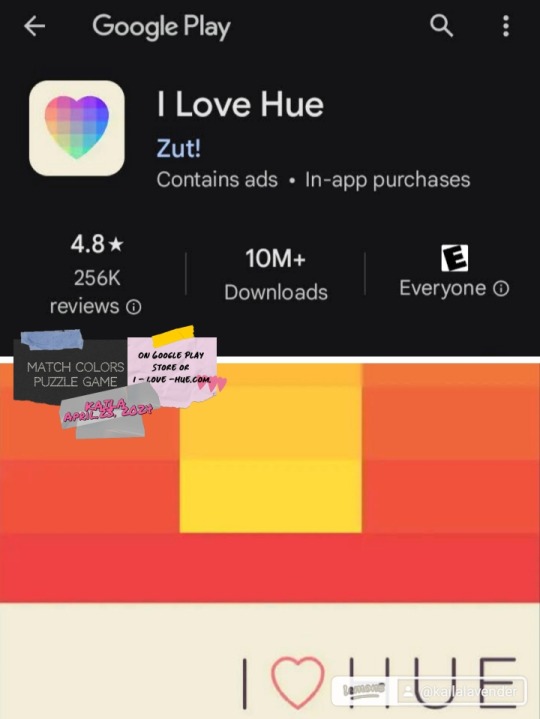


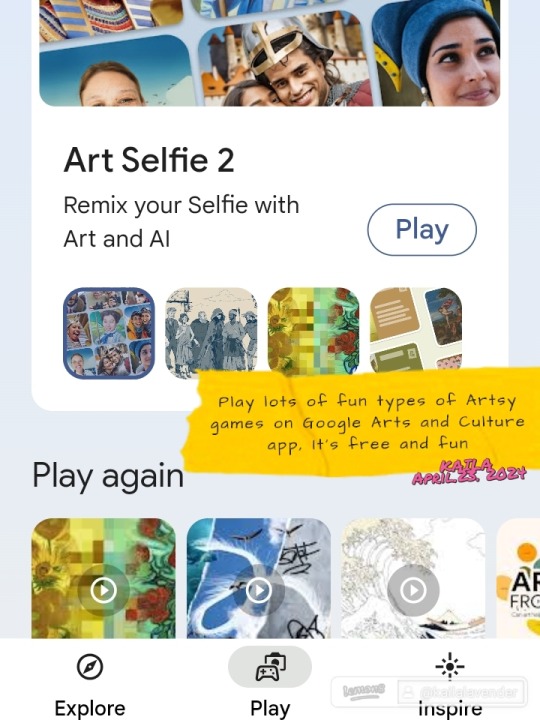
ART & ARTSY GAMES I want to play , PT. 2
🎨🎮📱💻🖥️🖱️👩🏽💻
0 notes
Text
Kirby is happy for Christmas 🥰🎄💕

5 notes
·
View notes
Text
Bunch of drawings I done past week ❤






#pokemon#rowlet#drawing#Artsygamer#gastly#boo#mario#likelike#zelda#the legend of Zelda#tifa lockhart#pacman
2 notes
·
View notes
Text
Persona 5 - Review
This review was originally published on Artsygamer on August 18th 2017
Back in the old SNES days, JRPGs were one of my favourite genres. After all, Secret of Mana was the game that brought me to game development in general and spawned my interest in programming. You could say my whole “career” started with the words “DARKNESS SWEEPS THE TROUBLED LAND, …”. But later on, I lost interest in most of them. Among the JRPGs I started but never finished were Final Fantasy X, Lost Odyseey, Blue Dragon, Tales of Symphonia, Final Fantasy XIII, Final Fantasy XV and even the wonderful Ni No Kuni. But I kept coming back to Persona 5 even after weeks of not playing it due to shortages of free time and the thought of not finishing it never crossed my mind once which is partly due to the fact that the art style of this game fulfills a very important function that most JRPGs lack: it makes the menus and the way the game is to be played easy to remember. That is the first of many strengths of the game and I can’t stress enough how important this is. Regardless how little I remembered about my last steps in the game after a longer period of time, the menu navigation was always an anchor point that I could use to get back into the game and in this regard Persona 5 really changed my perception of UI design. I knew before that P5 would be a very stylish game thanks to all the trailers, but I didn’t expect to learn so much about a topic that before was merely an afterthought I wanted to minimize as much as possible in my own designs.
The style of the game also helps disguising the game’s PS3 origin although its technical simplicity becomes obvious if you look close enough. Thankfully this never became a concern and it speaks volumes about P5‘s ability to be regarded as a timeless classic that the overall style negates its technical debility already. The next thing I need to praise in volumes is its soundtrack which is absolutely stunning. The last time I was blown away by a game soundtrack was probably when Bayonetta got released but P5 easily tops it. Sometimes I would just lay the gamepad aside to listen for a very specific song. Overall the audiovisual design fascinated me so much that I’m using a Persona 5 style theme on my smartphone and every alarm sound is a song from the OST. And it’s great that the design is so good because otherwise the fights would probably get tiresome very quickly despite the fighting system being the best shot at turn based battle systems that I have seen so far. Now I know people might disagree on that and would prefer a more time based approach but I love the fact that I can really take my time in battles if I want to without pressure (well, most of the time; there are one or two exceptions to this in the whole game).
The overarching narrative of Persona 5 is that of a pupil being sued by someone for essentially stopping an imminent rape. The protagonist gets transferred to a different school for rehabilitation and this is when things slowly start to get weird as the protagonist awakes to the power of his Persona and starts changing the hearts of bad people. The game doesn’t start with that though; it actually starts at the last quarter of the game, the protagonist gets captured and interrogated and the interrogation itself is what the player experiences and plays through up until past and present sync back and the endgame starts. The structure of Persona 5‘s storytelling – at least as far as the main story is concerned – is to get a new “big” target. Those persons’ twisted desires have created palaces in the metaverse that the player needs to infiltrate, steal the treasure of the target and change the target’s heart by doing so. If this sounds complicated, let me break it down for you: you need to play through a dungeon and defeat the dungeons boss. The thing about those dungeons is that they must be completed until a certain deadline. Within this timeframe, you are pretty much free to spent your time as you want to. Don’t want to proceed the palace but instead go learning at the diner on a rainy day? Do it. Time management is one of the mechanics that I first thought would really annoy me; but I quickly figured out that it solves a problem for me that I often have with open world games or other games with loads of side activities: it keeps my focus in check. Most side activities cause one half of the day to pass, so you could fill one day with two side activities. Exploring a dungeon however will cause the whole day to pass. So if – for example – you want to go fishing at night (because it’s cheaper) you can’t go to the dungeon that day. The time management only gets more complex as you gather more and more confidants (more on that in a moment) that you want to build a relationship with in addition to the protagonist’s own skills that you want to enhance by taking part in certain activities. You can even lend DVDs to watch at home that you need to return within two weeks. That all might sound annoying but it really isn’t; it actually helps the player prioritizing instead of getting lost in all the possible activities.
It’s worth pointing out that the topics that Persona 5 attends to are often heavy. The game – as lighthearted as it can be at times – deals with sexual harassment, physical and psychological abuse, horrible working conditions, drugs, blackmailing and even rabble-rousing and murder. Games are often a way to escape reality and the problems we face in real life for a bit, but while many games chose to offer a more abstract or even ridiculous way of relieving stress (sometimes even by building a different type of stress) Persona 5 lets the player stand against those real life problems, solving them with supernatural powers and even explains that bad people are not born bad but fall victim to their own desires which are often created by defining experiences in their past. It’s unusual to find this in a game and even though monologues and dialogues are mostly delivered in a very anime, over-the-top style, I feel like Persona 5 never falls flat on the severity of its topics.
Of course the protagonist doesn’t fight alone. You will meet a certain number of confidants – supporters if you will – that can roughly be seperated into two types: party members and supporting characters. Party members will fight with you, you can change their equipment, chose skills of their Persona when they level up and even tell them what to do in rush mode – some sort of fast forward for easy fights. Supporting characters will sell you stuff or help you enhance your skills and while party members are not missable and tied to the main story, supporting characters can be missed. I know for a fact that I didn’t forge a bond with at least one confidant and another one I didn’t get until the last story dungeon (which means I played through the game without the ability to change fighting party members in-fight; yes, those kind of abilities can come with confidants). You can strengthen your bond with every confidant by spending time with them and with some you can even enter a love relationship (you can even have more than one love relationship at the same time) but it’s not always as easy as approaching a confidant and pressing a button. Sometimes they don’t have time for you, sometimes you need to reach a certain level with a skill (Angelic Kindness is till haunting me) which means you’ll first need to spend your time on activities increasing your skills like watching movies, reading books, caring about your plant or eating fast food (sic!). With all of that the game develops a totally different kind of dynamic compared to other JRPGs and it’s this dynamic that helps countering the problem of pacing that many games in the genre often have. It creates a nice back and forth between engaging exploration with frantic fighting and interesting interaction with NPCs and more mundane activities and although the beginning of the game is very slow, this slowness is what helps emphasise the drama once shit hits the fan and the wheels start to spin faster.
I already wrote that to me P5‘s fighting is the best iteration of turn based JRPG combat so far and that has a lot to do with the way Personas work. While other party members stick to one specific Persona, the protagonist can hold more than one and Personas are acquired by negotiating with enemy Personas, trying to recruit them. You will also learn the skill to fuse two (and later more) Personas into one new Persona and it’s this variety and freedom that truly brings Persona 5′s fighting mechanics to life especially since the combinations of elemental strengths and weaknesses, passive skills, buffs and debuffs and other special abilities like drain and reflect create a complexity that I would consider good complexity. Many games introduce complexity to their mechanics just for the sake of having said complexity but in P5 this complexity is often an optional toolset that evolves naturally but can also be largely ignored if the player wants to pull through the game by brute force. It’s another way of keeping the fights interesting throughout the game.
All of this doesn’t mean P5 is a perfect game however. I already wrote how the game is technically a PS3 game but it doesn’t ran smoothly on my PS4 Pro all the time either. Hickups were rare but they did occur which seems strange. Also the game takes a bit to get up to speed and the beginning hours can feel sluggish. Probably my biggest point of criticism is the way the camera behaves when using the stealth mechanic. Being a phantom thief means you will sneak through the palaces and try to ambush enemies to get an advantage in combat. This advantage combined with clever execution on the enemies’ weaknesses is what enables the player to overcome enemies that are much stronger which feels great and empowering no matter how often you do it. On the other side, being ambushed by lower level enemies can quickly result in a game over if the weaknesses of your party are exploited. This happened to me 2 times in my whole playthrough but every time it made me stop playing the game. Not because I had lost but because the ambush was only possible due to the way the games’ stealth mechanic work. As long as you’re not detected by an enemy, you can go into stealth mode at specific points in the environment and you can also swiftly jump to new cover positions without being seen and also ambush enemies that come within reach. However, the camera tries to avoid solid obstacles, forcing you to try and get an enemy into your viewport and then hitting “X” to ambush. However, if the enemy turns in the meantime or the distance changes slightly you will ambush into the empty space right beneath the enemy and if you’re seen the enemy will likely ambush you faster than you can react. It’s weird because every other aspect of the game is so well polished.
I really had a hard time coming up with a score for Persona 5. I didn’t expect to play a game like Breath of the Wild that feels genre defining to me again so soon. And I certainly don’t want to be part of the score inflation of the recent decades although my review is merely an amateur one. But every time I picked up the gamepad to lead the Phantom Thieves to their next target, every time I chose to go learning at the diner for upcoming exams, every time I had to decide between multiple confidants asking for my time to discuss topics or simply spend time together I overdrew my videogame time limit; hard. I also know there are multiple positive points I wanted to address when I started writing this review but forgot by now; but it doesn’t matter. Persona 5 is the type of game you can enjoy on a hot summer evening with a cold Gin & Tonic as well as on a cold winter day with a cup of hot chocolate. It stole my heart, how could I not give it the best possible score?
10 / 10
0 notes